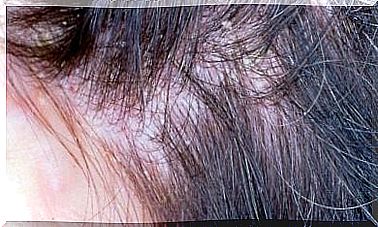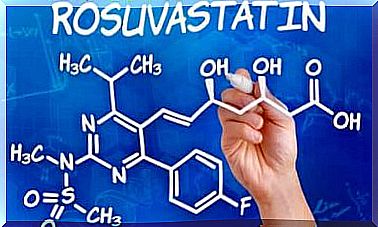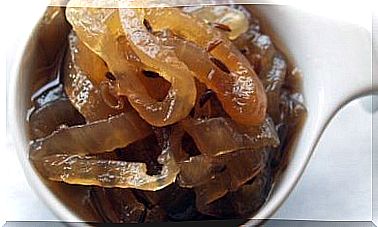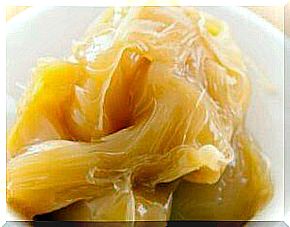What Is The FODMAP Diet And What Are Its Benefits
The vegetables in the FODMAP diet have a high content of short-fermenting carbohydrates, so it is a great option for those with problems digesting properly.

Have you ever heard of the FODMAP diet? No ? Do you suffer from problems related to the large intestine, such as gas, abdominal pain, swelling or diarrhea? So keep reading this article because this diet might be the solution to your problems.
What is the FODMAP diet?
The term FODMAP is an abbreviation of “fermentable oligosaccharides, disaccharides, monosaccharides and polyols”. This means that you will be eliminating vegetables with a high content of short fermenting carbohydrates from your diet.
Although some people may like them very much, not all organisms have the ability to synthesize them without a problem. In particular, this diet is perfect for those who experience the following issues:
- Crohn’s disease
- Ulcerative colitis
- Irritable colon
Unlike a lot of extreme diets that seek to lose weight indiscriminately and in record time without paying attention to health, this diet is very well thought out and designed.
In addition, it is not intended to make you lose pounds, but to prevent discomfort in the short and long term.
What foods are avoided in the FODMAP diet?
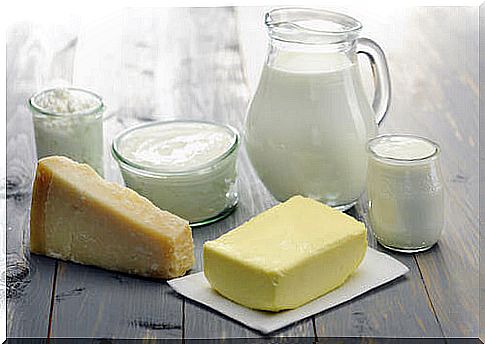
Next, we’ll tell you which foods have some of the characteristics of FODMAP and, therefore, which ones you should avoid:
- Foods rich in galactooligosaccharides: legumes
- Foods rich in fructooligosaccharides: garlic, rye, wheat and onion
- Products rich in sorbitol, xylitol and mannitol: sweeteners and low-fat products
- Natural sweeteners containing fructose: syrups, honey, jams
- Foods rich in lactose: milk and its derivatives
Benefits of the FODMAP diet
Of course, at first glance, the FODMAP diet seems very restrictive. However, before we put it in place, we want you to know the benefits you will get by following it.
1. It reduces symptoms of irritable bowel syndrome by up to 76%
According to a study, a large number of people who follow this diet can forget about gas, bloating and upset stomach.
In this sense, it is important to take into account that many foods that are recommended to be eliminated in this diet ferment in the intestine. Therefore, you should make a wise choice and opt for foods that are high in fiber that promote bowel movement.
For example, you can eat homemade rice or quinoa instead of industrial wholemeal bread.
2. It reduces discomfort in Crohn’s disease patients
A study of 9 people diagnosed with Crohn’s disease found that the FODMAP diet positively affected the amount and quality of prebiotics.
Of course, a study in nine patients is not a determining factor, but it helps to understand the effects that can be achieved. Remember that if you have Crohn’s disease you will need to make healthy changes for your life.
If you don’t want to follow this diet for life because it is very restrictive, you can try to apply it for a few weeks and then incorporate the other foods gradually and without excess. You can repeat the process once a month to rest your body.
Just remember to be content. Just because you control or avoid one food group per day doesn’t mean you can eat them indiscriminately, as the effect can be even more painful.
3. It reduces symptoms of chronic fatigue

Are you without energy all the time, no matter how you eat? Following the FODMAP diet has been shown to reduce this effect. This happens because your body stops receiving foods that make you expend more energy than you get, especially when it comes to sweeteners.
Of course, you will continue to consume sugars because fruits are allowed. However, these sugars are natural and generate less fermentation than honey or synthetic sugars.
Remember that the best sugar is the one you get from the whole fruit. This is because it is accompanied by fiber, which reduces glucose spikes and fermentation.
Foods Allowed in the FODMAP Diet
The FODMAP diet isn’t all about restrictions. Some of the foods you can eat are:
- All meat and its derivatives, provided they are free of fructose and sweeteners
- Natural oils
- Herbs, spices and natural seasonings
- Natural nuts and seeds without preservatives and sweeteners
- Whole fruits, not just juice: bananas, blackberries, oranges, kiwis, strawberries, melons, tangerines and lemons.
- Natural sweeteners
- Whole grains: natural corn, oats, brown rice, quinoa, sorghum and tapioca
Remember, not all diets are about losing weight. Some are simply looking to help you lead a healthier life without physical pain and discomfort.





